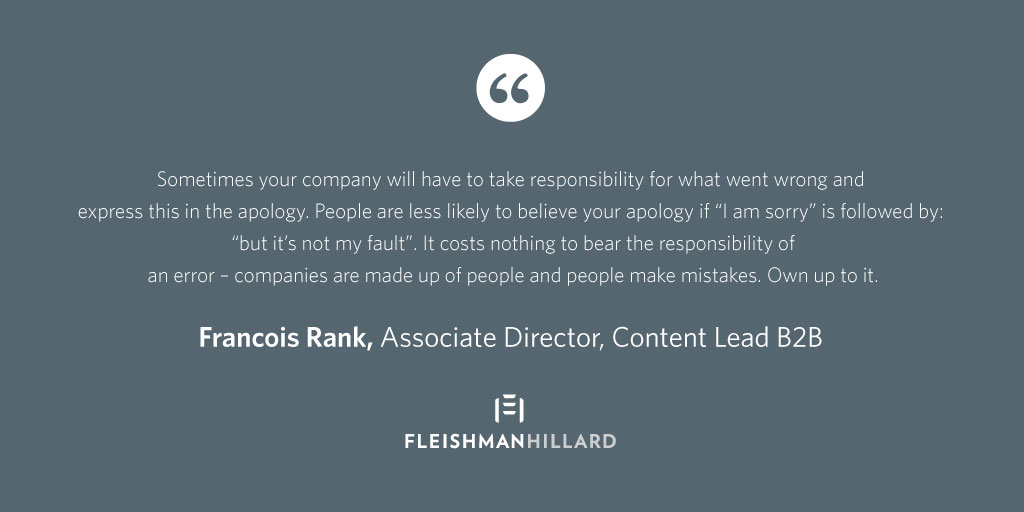The essence of the corporate apology
Part one of this blog post explored the makeup of the public apology for corporates and public figures.
While the steps needed to build an apology can be followed quite easily the public apology needs to be extremely measured in order to be successful.
The Five Fundamentals of Apologising:
In his book, The Five Languages of Apology, anthropologist Gary Chapman unpacks the ‘language’ needed to use to build an authentic apology. While these five “languages” speak specifically to making a personal apology they provide a handy checklist to developing the content that will go into a corporate apology.
Not every apology needs all of the ‘languages,’ but they all speak to ensuring that your apology is sincere – the most important aspect of composing a corporate apology.
So here are the Five Languages of Apology and thoughts to how they can guide a good corporate apology.
Expressing Regret: We are sorry
There is a lot of debate around whether a company spokesperson should actually say: “I am sorry”. Some believe that using those exact words betray a weakness, which is not appropriate for a major corporate. Whatever your approach be sure to express regret, even if you choose less obvious language when doing so.
Accepting Responsibility: We are wrong
Sometimes it is not enough to simply express regret. Sometimes your company will have to take responsibility for what went wrong and express this in the apology. People are less likely to believe your apology if “I am sorry” is followed by: “but it’s not my fault”. It costs nothing to bear the responsibility of an error – companies are made up of people and people make mistakes. Own up to it.
Making Restitution: What can we do to make it right?
This is about action and a willingness to fix problems rather than ignore them. In some cases people don’t care that you are sorry. They want to know what you are going to do to fix the problem. Don’t be afraid to tell them what you are planning to do.
Genuinely Repenting: We want to change
Demonstrating that you know what behaviour needs to be fixed means you have reflected on the situation and tells people you are not apologising because you have to, but because you want to. This is about what you are going to do alter the behaviour or action that led to the offence and, more importantly, saying, “We won’t do it again.”
Requesting Forgiveness: Will you forgive us?
Asking for forgiveness is the final indication to your customers that you value them and want to continue your relationship with them. But be careful; if your apology is insincere asking for forgiveness will only open the company up to more criticism. My advice would be to steer clear of this when it comes to the corporate apology. It’s perhaps more suited to a public apology from a celebrity or politician who has transgressed in some way.
Final words:
Be careful of public denials of information which is true and could come to light later. Admitting you lied before you apologise adds an unnecessary extra layer of complexity.
The language you choose to shape your apology will of course change from scenario to scenario. What works for a product recall or failure will not apply when it comes to a crisis. That’s where your skill as a communicator comes in. Being able to read the situation and then apply the correct course of action is critical.
Written by Francois Rank
Find Out More
-
The metaverse – Is it important for your business?
June 2, 2022
-
First Year At A Job And It Had To Be 2020!
June 11, 2021
-
PR trends accelerated by the COVID-19 pandemic
February 19, 2021

